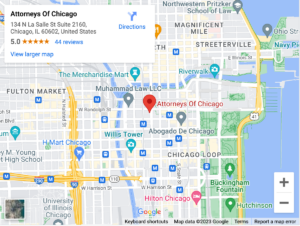
Anesthesia is a miracle of modern medicine, helping doctors and dentists perform painful and invasive procedures by relieving you of any pain and negative reactions while they work. Be that as it may, anesthetics are powerful drugs that can cause long-term disabilities or even death when administered incorrectly.
What Is the Function of Your Nervous System?

Your nerves carry signals between your brain and nerve receptors. These signals take three forms — autonomic, motor, and sensory. Autonomic nerve signals control involuntary systems and actions, such as your breathing, blood pressure, and heartbeat. Motor nerve signals move your body by contracting and relaxing your muscles. Sensory nerve signals carry sense perceptions to your brain.
The nerves are formed from nerve cells called neurons, and they function by receiving a nerve signal and transmitting it from neuron to neuron until it reaches its destination. Signals from your brain travel down nerves to your muscles or organs, while signals sourced from your eyes, ears, tongue, nose, and skin travel along nerves to your brain.
When nerves are stimulated, they generate an electrical charge, which gets expressed when neurons move charged molecules called ions from inside the neuron to its surface. The change in charge results in the release of neurotransmitters. The next neuron in line detects the neurotransmitters and moves its ions to its surface. The process continues down the line until the signal reaches the brain or the part of the body your brain needs to control.
How Do Anesthetics Work?
The term “anesthetics” broadly describes a range of drugs that perform any of the following functions:
- Block sensations, including pain
- Paralyze muscles
- Render the recipient unconscious
Doctors administer anesthetics in three ways, with the purpose of the anesthetic determining which type of drug gets used. With that said, the applications of anesthetics include the following:
Local Anesthesia
Local anesthetics, such as procaine (the generic name for Novocaine), only work in the precise area the doctor or dentist administers them. Local anesthesia causes numbness and tingling at the injection site to reduce or block any pain sensations. These types of drugs are used for minor but invasive procedures like sutures after a workplace accident.
Local anesthetics function as ion channel blockers (also called sodium channel blockers, as the charged particles include a sodium atom), which means they prevent neurons from moving ions to their surfaces. With its ion channels blocked, a neuron cannot generate the charge needed to transmit a nerve signal to the next neuron.
Regional Anesthesia
As their name suggests, regional anesthetics block nerve sensations from an entire region of the body. Regional anesthetics include long-duration ion channel blockers like bupivacaine.
The main difference between regional anesthesia and local anesthesia is how it is administered. Anesthesiologists administer regional anesthetics on nerve roots or the spinal cord.
For example, epidural anesthesia procedures used during childbirth involve placing a catheter under the mater dura surrounding the spinal cord. There, the anesthetics interrupt nerve signals to and from the region below the waist.
General Anesthesia
General anesthetics combine pain control, paralysis, and sedation. A neurotransmitter blocker stops neurons from detecting neurotransmitters, working to both paralyze the body and cut off any painful sensations. Opiates, for example, block the receptors for certain neurotransmitters. The body still experiences pain and generates pain signals, but the brain does not sense them.
The sedatives used for general anesthesia produce unconsciousness so that the patient does not move around during the procedure. They also induce minor amnesia, as the patient will not remember any of the sensations they experienced while sedated.
Doctors use general anesthesia for major surgeries, such as reconstructive surgery, that must be done after someone shatters their hip in an auto accident.
What Are Some Examples of Anesthesia Injuries?
Anesthesia injuries can take several forms, such as:
Nerve Damage
Local and regional anesthetics, when received in doses that are too large, can permanently damage neurons. Specifically, too much of an ion channel blocker can permanently affect the ion channels, meaning the neurons cannot produce signals even after the procedure.
Symptoms of nerve damage can include any of the following:
- Numbness
- Tingling
- Paralysis
- Weakness
- Loss of dexterity
Nerve damage is typically a permanent injury.
Cerebral Hypoxia
Cerebral hypoxia, also called an anoxic brain injury, happens when the brain does not receive enough oxygen. This can transpire when an anesthesiologist administers too much of the drug. It can also happen, however, when an anesthesiologist fails to monitor their patient’s vital signs after administering a general anesthetic.
Overdose
An overdose occurs when an anesthesiologist administers too much sedative. The drug depresses the patient’s brain activity, circulation, and respiration, potentially causing brain damage from a lack of oxygen that can cause a patient to fall into a coma or even die.
Underdose
Anesthesiologists can prevent most underdoses by asking about your sensations after administering a local or regional anesthetic, as you will remain conscious. But they cannot do so after administering a general anesthetic.
An underdose can produce a condition called anesthesia awareness, in which the sedative wears off during surgery, but the patient remains paralyzed. As a result, the patient sees, remembers, and feels everything that happens, which can produce severe mental trauma.
Allergic Reaction
You can suffer an allergic reaction to an anesthetic drug that can cause your airway to constrict or cause a rash or hives. In extreme cases, however, a patient may experience anaphylaxis, a life-threatening allergic reaction.
How Do You Prove Liability For an Anesthesia Injury?
You can pursue compensation for an anesthesia injury that resulted from medical malpractice. Not every error constitutes medical malpractice, and a reasonable error may not trigger your right to compensation. You likely have no right to compensation, for instance, following an allergic reaction that neither you nor the doctor knew you would have.
To prove medical malpractice, you must show the following:
- You had a doctor-patient or dentist-patient relationship
- The healthcare provider failed to meet the standard of professional care
- The failure caused your injuries
Some healthcare providers who may bear liability for personal injury or wrongful death due to anesthesia include:
- Anesthesiologists
- Dentists
- Doctors
- Surgical nurses
- Pharmacists
If you received an adulterated or defective drug, you might have a claim against the drug manufacturer as well.
What Kinds of Compensation Can You Receive For an Anesthesia Injury?
Once you prove medical malpractice, you can seek compensation for your economic and non-economic losses.
Economic losses include the financial impacts of your anesthesia injury, such as:
- Expenses for medical care
- Lost income
- Diminishment in earning capacity
Non-economic losses, on the other hand, include the human costs of your anesthesia injury, including:
- Pain
- Mental anguish
- Disability
- Disfigurement
An anesthesia injury can cause mental and physical trauma that can affect you for the rest of your life, Attorneys of Chicago Personal Injury Lawyers can help you. Contact us today for a free consultation to discuss your anesthesia injury and the possible medical malpractice case you can pursue, call us at (312) 929-2884.

